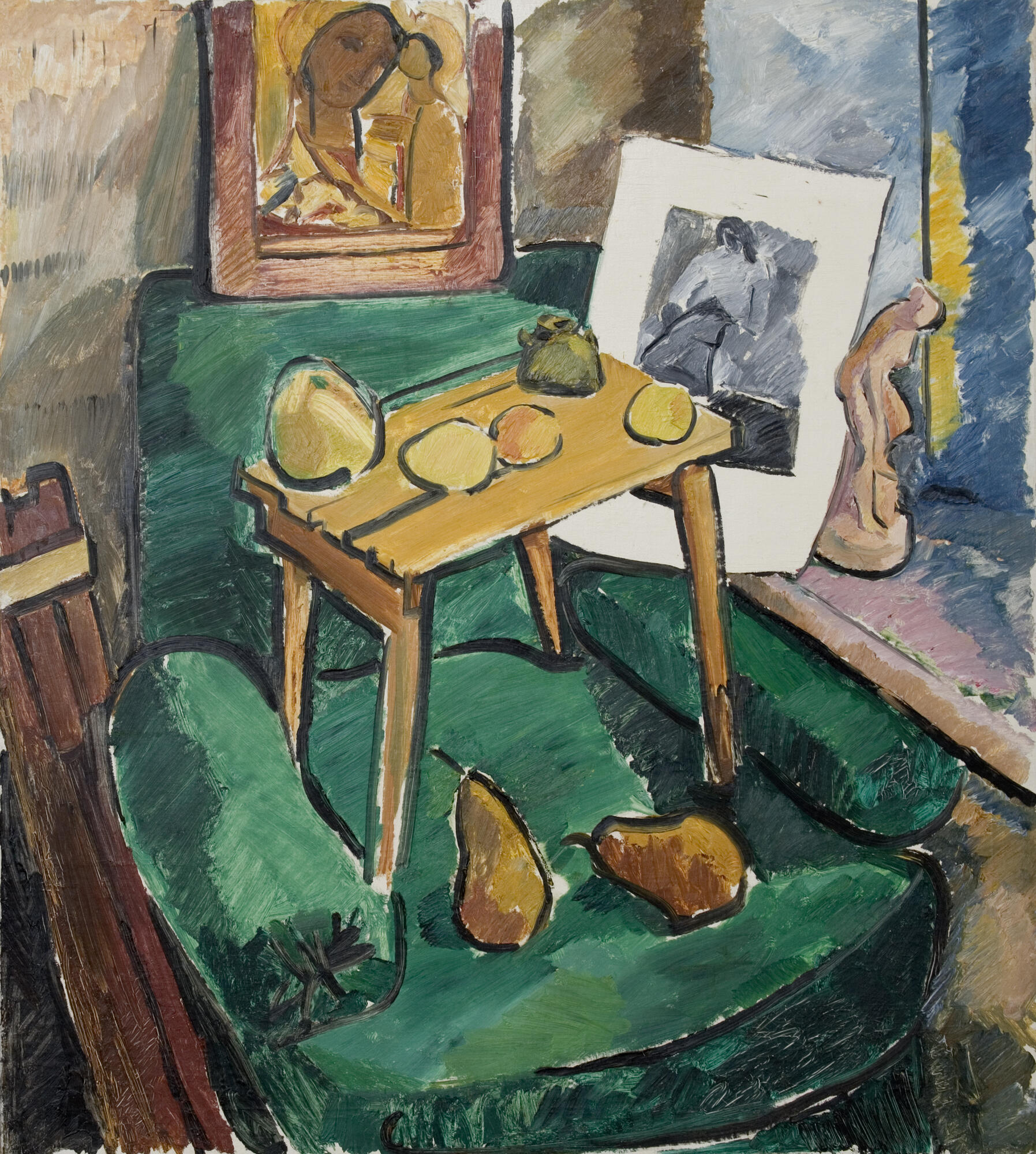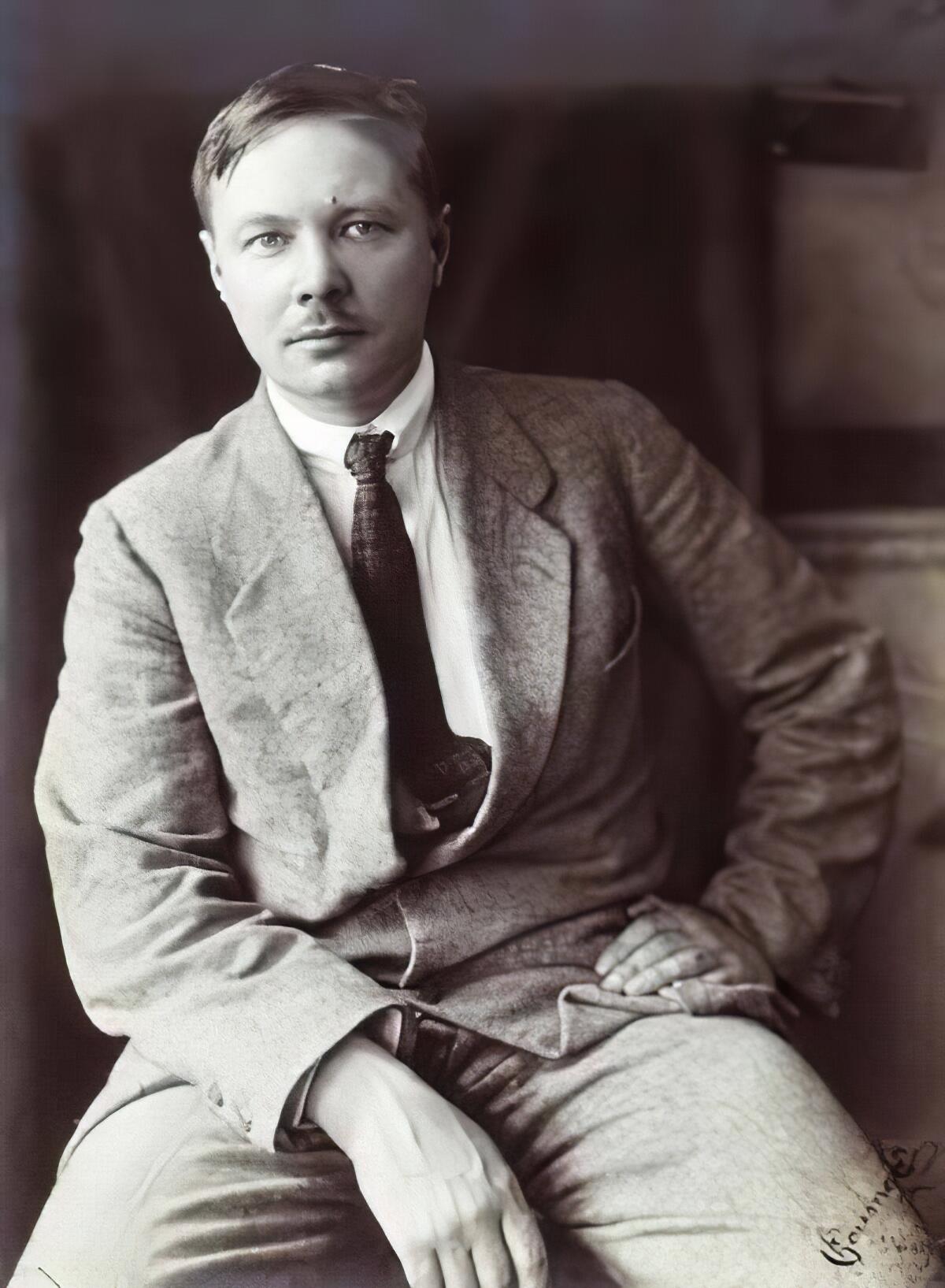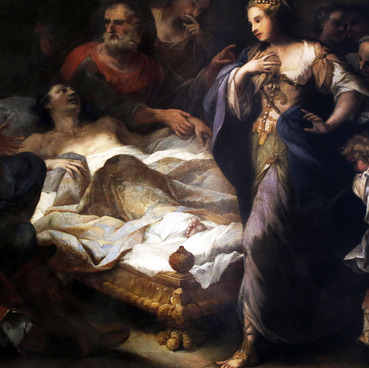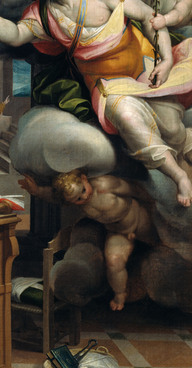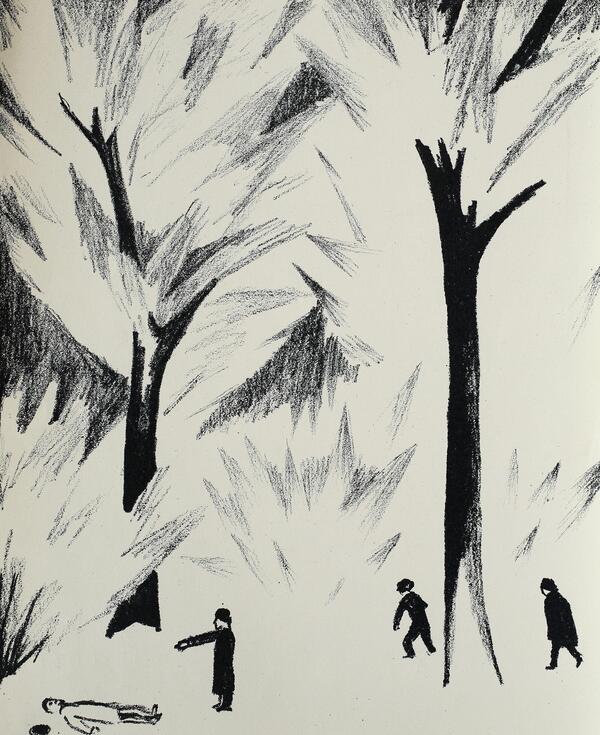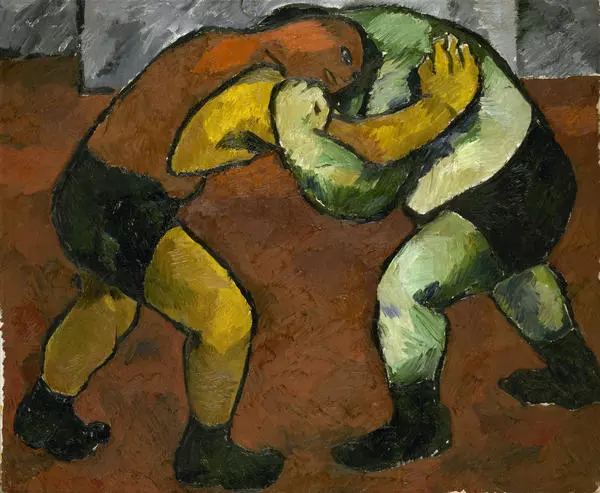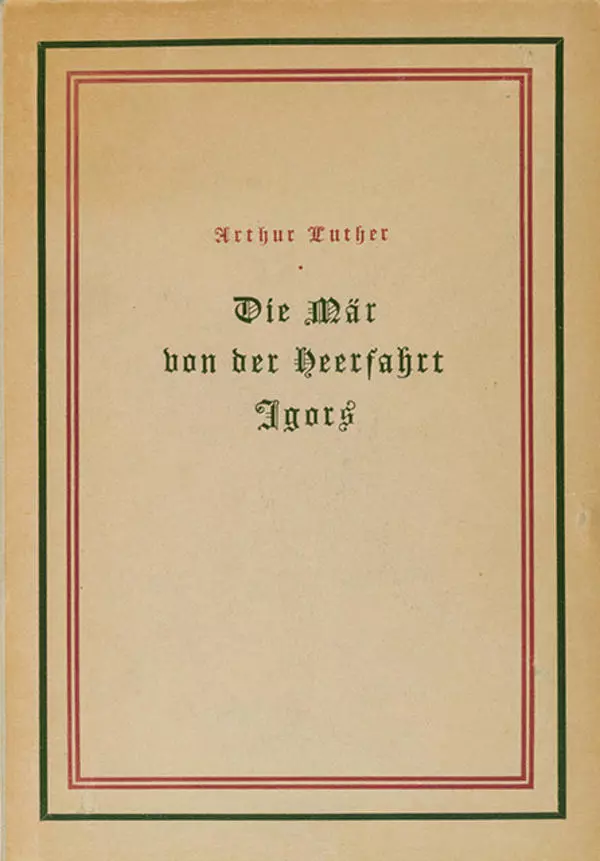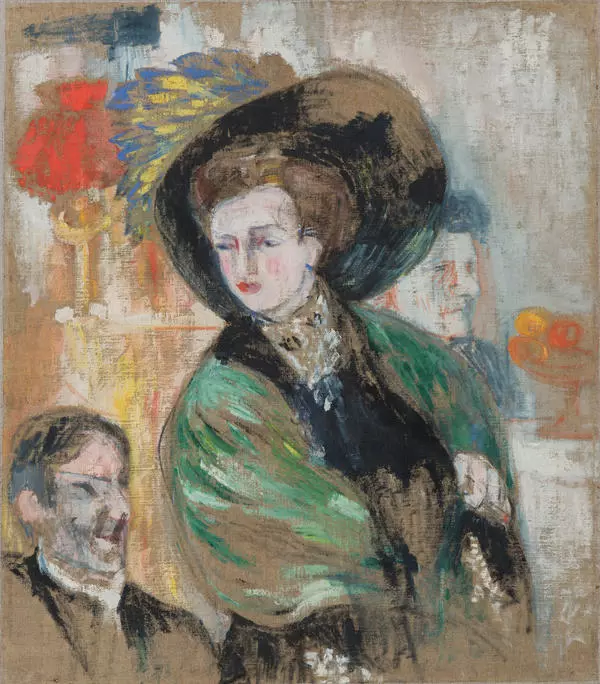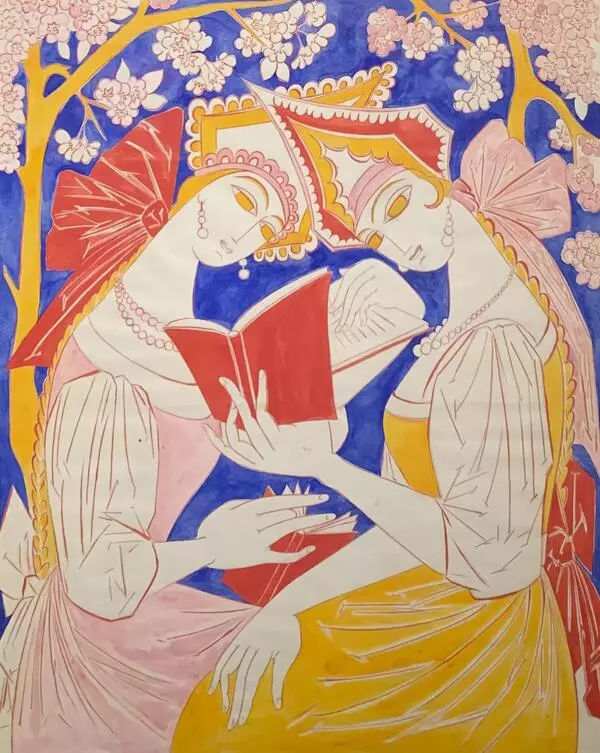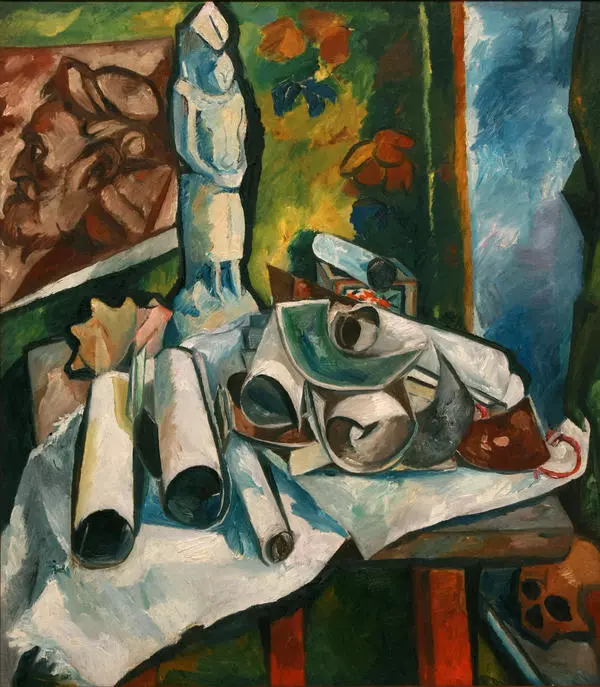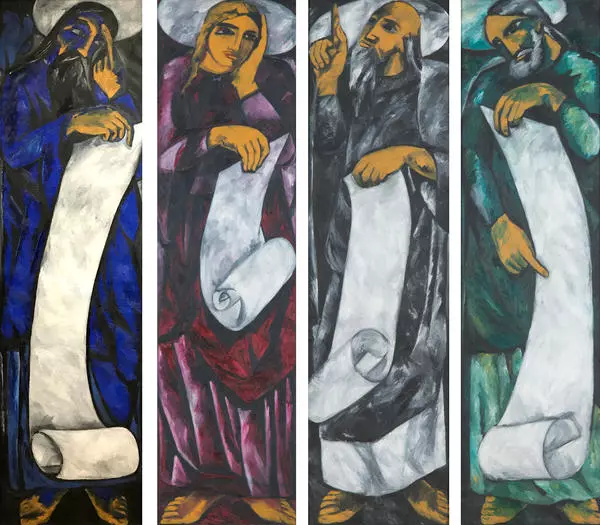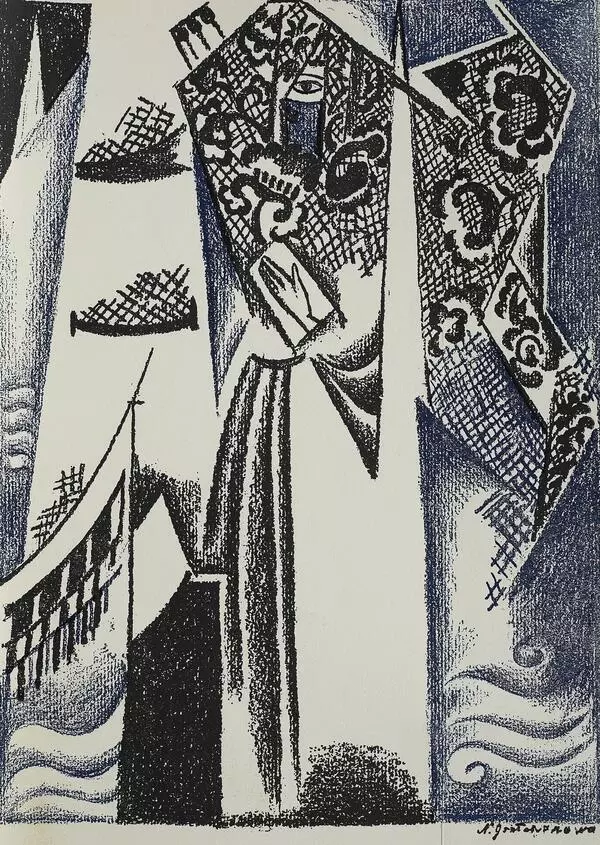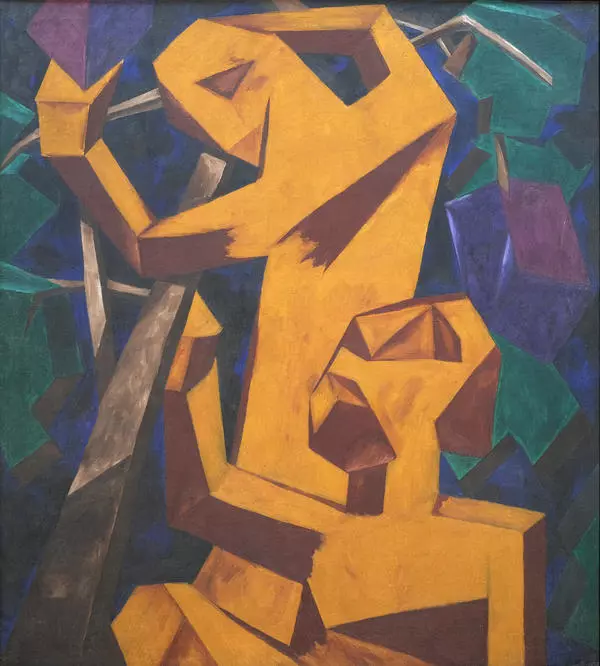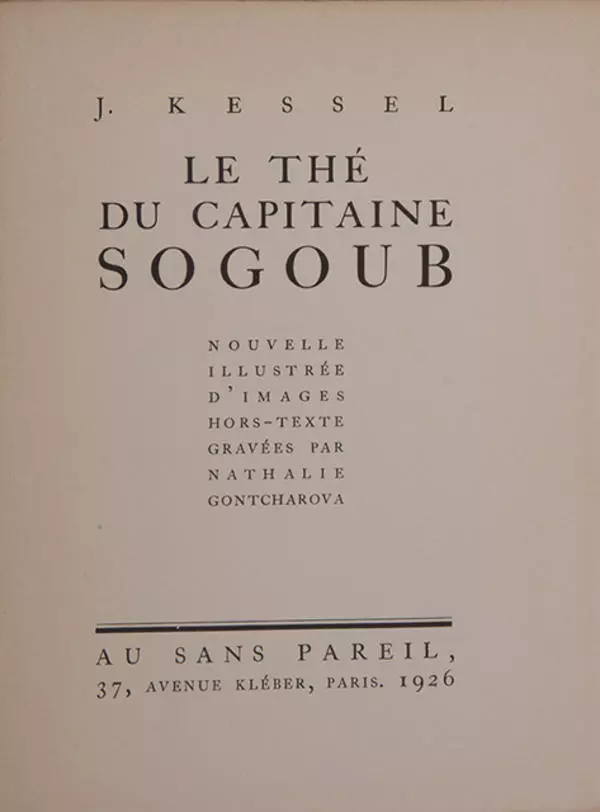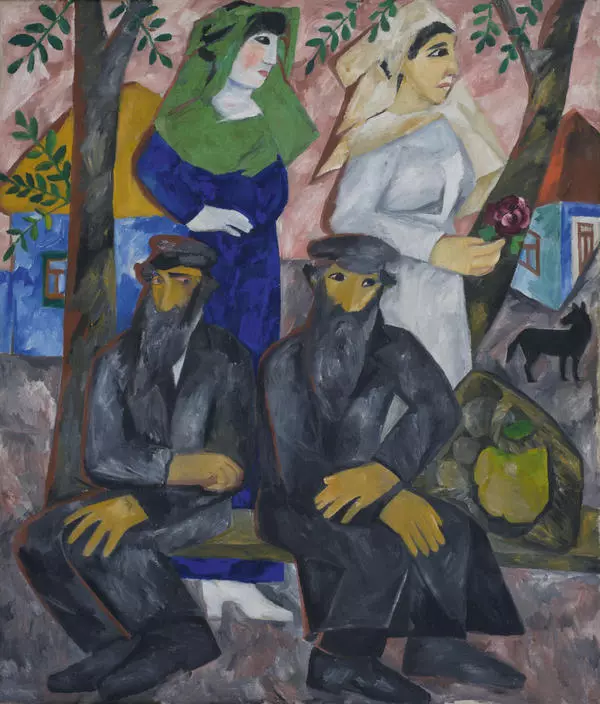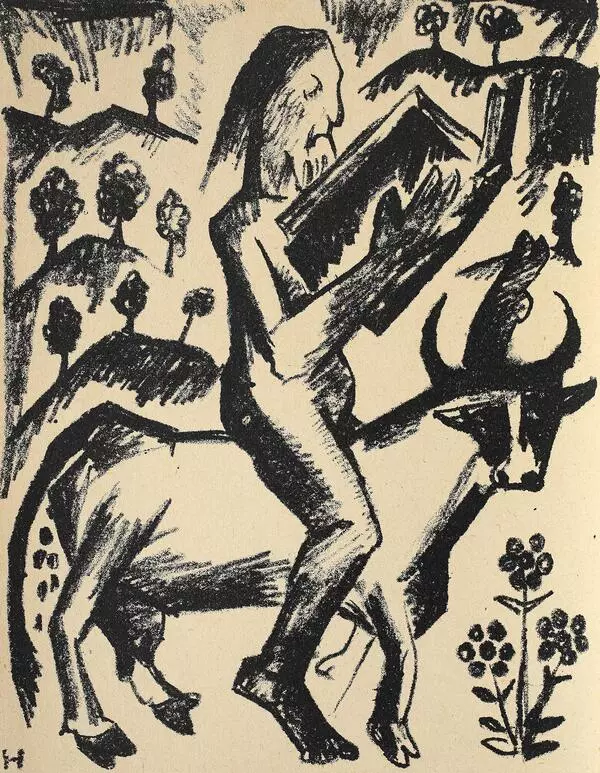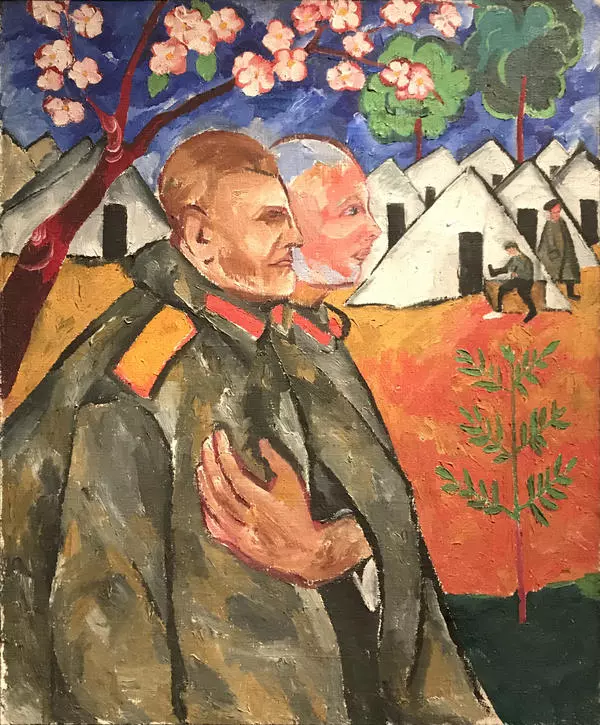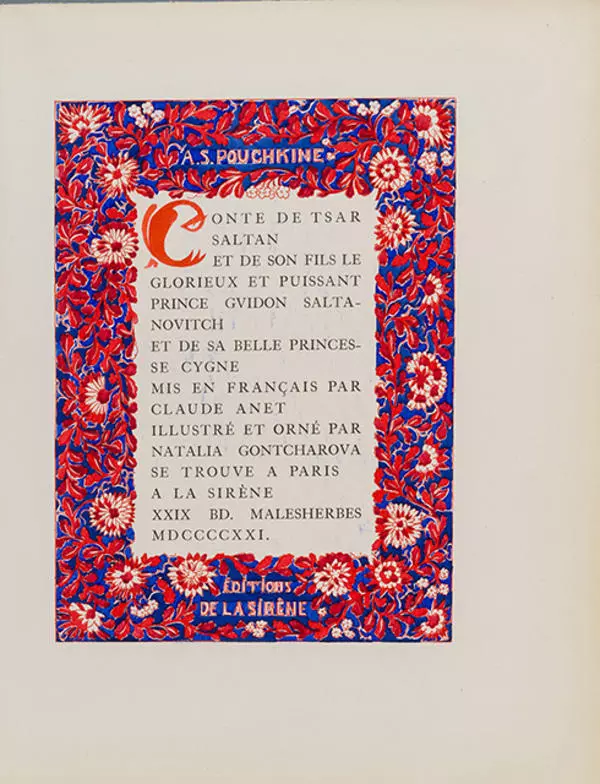Natalia Goncharova is a Russian Avant-Garde artist, graphic artist, and set designer who belonged to the Goncharovs ancient noble family. Her paternal grandfather was Natalia Goncharova-Pushkina’s nephew. The artist spent her childhood in the Tula province, where her father owned several villages and estates: Ladyzhino, Nagayevo, Luzhny.
Natalia Goncharova is a leading example of the Russian Avant-Garde, and ‘In the Artist’s Studio’ fully meets a new trend in the art of that time: with bold compositional and coloristic solution, multi-tiered still life at an unusual angle. In the painting, you can see everything that was a powerful source of inspiration for the painter. The sculpture depicting the bathed Aphrodite recalls that Goncharova started her training as a sculptor. The icon representing the Virgin and Child is an Old Russian Art that is a powerful source of inspiration for the artist. Print from Mikhail Larionov’s picturesque work ‘Provincial Fancy Woman’ (Goncharova’s and Larionov’s work is inextricably intertwined).
Mikhail Larionov, alongside Natalia Goncharova, became a matrimonial and creative union. They inspired each other throughout the years. Both artists were born in the summer of 1881 with a month’s difference: Mikhail Larionov was born on June 3, Natalia Goncharova — July 3. The artist families moved to Moscow in the same year. Both future artists entered the same Moscow School of Painting, Sculpture, and Architecture in the same year, and at the age of 18, they met to love each other and stay together for life. Natalia Sergeevna Goncharova originally entered the sculpture faculty and studied with Sergey Volnukhin and the famous Paolo Troubetzkoy, Mikhail Larionov studied with the painter Konstantin Korovin. It was Mikhail Larionov who convinced N.S.Goncharova that her vocation was painting. The artists participated in almost all exhibitions and creative associations (“Jack of Diamonds”, “Donkey”s Tail”, “Target”, etc.) together.
The painting entered the museum from the Art and Industrial School in 1926. Following Moscow and St. Petersburg, State Free Art Workshops, an art educational institution, was opened in Tula. Museums of Pictorial Cultures, the first museums of modern art, were established. But a few years later, free workshops, named Art and Industrial Technical Schools were disbanded, and the collections were sent to provincial museums.
Natalia Goncharova is a leading example of the Russian Avant-Garde, and ‘In the Artist’s Studio’ fully meets a new trend in the art of that time: with bold compositional and coloristic solution, multi-tiered still life at an unusual angle. In the painting, you can see everything that was a powerful source of inspiration for the painter. The sculpture depicting the bathed Aphrodite recalls that Goncharova started her training as a sculptor. The icon representing the Virgin and Child is an Old Russian Art that is a powerful source of inspiration for the artist. Print from Mikhail Larionov’s picturesque work ‘Provincial Fancy Woman’ (Goncharova’s and Larionov’s work is inextricably intertwined).
Mikhail Larionov, alongside Natalia Goncharova, became a matrimonial and creative union. They inspired each other throughout the years. Both artists were born in the summer of 1881 with a month’s difference: Mikhail Larionov was born on June 3, Natalia Goncharova — July 3. The artist families moved to Moscow in the same year. Both future artists entered the same Moscow School of Painting, Sculpture, and Architecture in the same year, and at the age of 18, they met to love each other and stay together for life. Natalia Sergeevna Goncharova originally entered the sculpture faculty and studied with Sergey Volnukhin and the famous Paolo Troubetzkoy, Mikhail Larionov studied with the painter Konstantin Korovin. It was Mikhail Larionov who convinced N.S.Goncharova that her vocation was painting. The artists participated in almost all exhibitions and creative associations (“Jack of Diamonds”, “Donkey”s Tail”, “Target”, etc.) together.
The painting entered the museum from the Art and Industrial School in 1926. Following Moscow and St. Petersburg, State Free Art Workshops, an art educational institution, was opened in Tula. Museums of Pictorial Cultures, the first museums of modern art, were established. But a few years later, free workshops, named Art and Industrial Technical Schools were disbanded, and the collections were sent to provincial museums.
